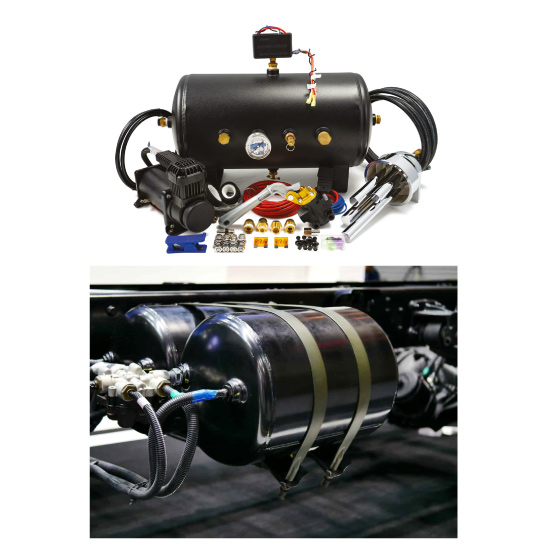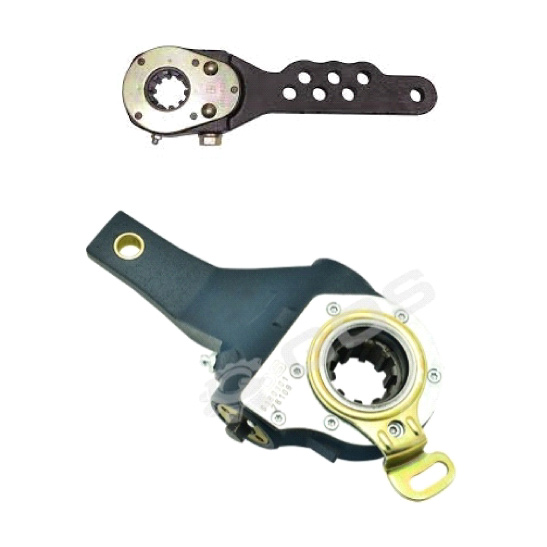تعد أقراص الفرامل جزءًا هامًا من نظام الفرامل في السيارات والدراجات النارية وغيرها من المركبات. وتقع الأقراص الفرامل عادةً في العجلات وتدور معها. وعندما يتم الضغط على دواسة الفرامل، تضغط العوامات أو السفايف على الأقراص الدوارة، وتتولد قوة الاحتكاك بينهما تقلل من سرعة العجلات وتوقف المركبة
تتألف أقراص الفرامل من قرص معدني دائري مسنن على الحواف الخارجية، يتم تثبيته دوارًا مع العجلة. ويتم توليد الاحتكاك عندما تضغط العوامات على السطح المسنن من القرص. وتختلف أقراص الفرامل في الحجم والشكل والمواد التي تصنع منها، وذلك يعتمد على نوع المركبة واستخداماته
ويتم تقييم أقراص الفرامل بناءً على عدة عوامل مثل مقاومتها للتآكل وقوة الاحتكاك والتشغيل السلس. ويجب على السائقين تفحص أقراص الفرامل بشكل دوري للتأكد من سلامتها وتغييرها في الوقت المناسب إذا لزم الأمر.

يستخدم نظام الفرامل الهوائي عادة في المركبات ذات الحمولة الثقيلة مثل الشاحنات والحافلات والقطارات لتوفير قوة فرملة موثوقة. يعمل نظام الفرامل الهوائي عن طريق تحويل الهواء المضغوط إلى طاقة ميكانيكية لتشغيل الفرامل.
تتضمن المكونات الرئيسية لنظام الفرامل الهوائي ضاغط الهواء ومجفف الهواء وصهاريج الهواء وغرف الفرامل وخطوط الفرامل. يقوم ضاغط الهواء بضغط الهواء وإرساله إلى مجفف الهواء الذي يزيل الرطوبة والشوائب من الهواء قبل تخزينه في صهاريج الهواء. تخزن صهاريج الهواء الهواء المضغوط وتزود غرف الفرامل به عند الحاجة.
تقع غرف الفرامل في كل عجلة وتستخدم الهواء المضغوط لدفع مكبس يطبق الفرامل. تربط خطوط الفرامل غرف الفرامل بصهاريج الهواء وصمامات التحكم التي تنظم الضغط وتدفق الهواء إلى غرف الفرامل
تفضل نظم الفرامل الهوائية في المركبات ذات الحمولة الثقيلة لأنها توفر قوة فرملة متسقة ، حتى في الظروف القصوى مثل الطرق الرطبة أو الجليدية. بالإضافة إلى ذلك ، تتميز الفرامل الهوائية بنظام فشل آمن يقوم تلقائيًا بتطبيق الفرامل في حالة فقدان الضغط الهوائي في النظام ، مما يضمن توقف المركبة بأمان.
تتطلب أنظمة الفرامل الهوائية صيانة دورية لضمان عملها السليم. ويشمل ذلك التحقق من تسرب الهواء والحفاظ على الضغط الهوائي المناسب في النظام واستبدال المكونات التالفة أو المتآكلة. من المهم اتباع جدول الصيانة الموصى به من قبل الشركة المصنعة وفحص نظام الفرامل الهوائية بشكل دوري من قبل فني مؤهل لضمان سلامتها وموثوقيتها

الفرامل الراتشيت هي آلية تستخدم في بعض أنواع الفرامل لمنع الفرامل من الإفلات بشكل غير مقصود. تتكون من عجلة راتشيت ومحجل، الذي يتصل بأسنان العجلة لمنعها من الدوران في الاتجاه الخاطئ. عندما يتم تطبيق الفرامل، يتم فصل الراتشيت، مما يسمح للعجلة بالدوران بحرية. عندما يتم إطلاق الفرامل، يتصل المحجل بعجلة الراتشيت، مما يمنعها من الدوران إلى الخلف ويحافظ على تشغيل الفرامل. تستخدم الفرامل الراتشيت عادة في التطبيقات الصناعية ومعدات الثقيلة لضمان التشغيل الآمن والموثوق للمعدات.

هو جزء من نظام الكبح موجود في الإطارات الخلفية للمركبة ويساعد السيارة على التوقف عن طريق إبطاء سرعة الدوران. هذا الجزء ، المصنوع من الحديد الزهر ، ينضغط من نقطة المركز إلى النقطة الخارجية ، وبالتالي يزيد الاحتكاك. يؤدي هذا إلى إبطاء سرعة دوران العجلات.

قرص الفرامل ، المعروف أيضًا باسم الدوار ، هو أحد مكونات نظام الكبح الذي يعمل جنبًا إلى جنب مع وسادات الفرامل لإبطاء السيارة أو إيقافها. عادة ما تكون مصنوعة من الحديد الزهر أو مادة مركبة ويتم تثبيتها على محور العجلة. عند الضغط على دواسة الفرامل ، يتسبب الضغط الهيدروليكي في أن تضغط وسادات الفرامل على قرص الفرامل ، مما يؤدي إلى الاحتكاك وإبطاء السيارة. تعتبر أقراص المكابح ميزة مهمة للسلامة في المركبات وتتطلب الصيانة الدورية والاستبدال عند التآكل أو التلف.

عندما يُسأل عن المحور ، يتم وضعه على السيارة كقطعة حاملة متصلة بالمحور على عجلات السيارة. باستخدام المحور ، يمكننا بسهولة فهم عملية دوران العجلة بشكل عام.
